NTU Digital Projects:
Artistic Works of Joan Marie Kelly
View her works
View her exhibition catalogues
Read her writings
Kelly, J. M. (2009). The Communicative Dynamics of Painting: Art as Activism. International Journal of the Arts in Society, 4 (3), 413-432.
Kelly, J. M. (2014). Mirror, Mirror on the Wall: Self Identity in Communities of Marginalized Women in Kolkata, India. Inter-Disciplinary.net. Retrieved 6 January 2015, from https://www.inter-disciplinary.net
Other Resources:
Selected Journal Articles
Kosmala, K., & Imas, J. M. (2012).Favela is painting: an UrbansparkZ/art installation of social commitment and organisational change. Cadernos EBAPE.BR, 10(2), pp. 466-469.
Podro, M. (2010). Literalism and Truthfulness in Painting. British Journal of Aesthetics, 50(4), 457-468.
Zitzewitz, K. (2009). The Moral Economy of the Street: The Bombay Paintings of Gieve Patel and Sudhir Patwardhan. [Article].Third Text, 23(2), 151-163. doi: 10.1080/09528820902840623
Selected Books
Bingham, S. C. (2012). The art of social critique : painting mirrors of social life. Lanham, Md. : Lexington Books
Bourriaud, N. (2002) Relational Aesthetics. Paris: Presses du reel.
Helguera, Pablo. (2011). Education for Socially Engaged Art. New York: Jorge Pinto.
Alter, Joseph S. (1992). The wrestler’s body: identity and ideology in north India. Berkeley: University of California Press.
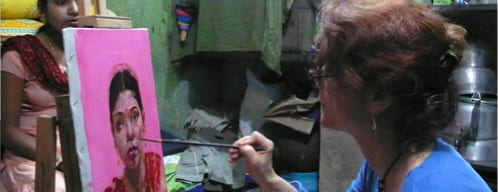
Works by Joan Marie Kelly
This is a digital image collection of Joan Marie Kelly’s artistic works. It is a collaborative project between NTU Libraries and Joan with the aim of showcasing the digital images of her creative outputs from 2008 to 2014.
This collection contains mainly works from 3 exhibitions and 1 artist residency:
1. Zones of Contact
Blue Mountain Gallery Chelsea, New York City
July 2011
“Joan Kelly operates in “zones of contact,” a theme elaborated in the 2006 Sydney Biennale: places where competing narratives of power compete, where silences speak to unwritten histories. Kelly reinvents the body through the environment of these zones: be it the foreign worker chattels of Little India, the brothels of Calcutta, or the factory towns of the Shenzhen Economic Zone. These zones mark the intersection of the grand narrative of globalization and progress with those of the lived reality at the bottom of the pyramid. This is landscape to the art of Joan Kelly.” ~ Paul Khoo, art critic, Singapore
In the Zones of Contact Exhibition Catalogue, Joan wrote,
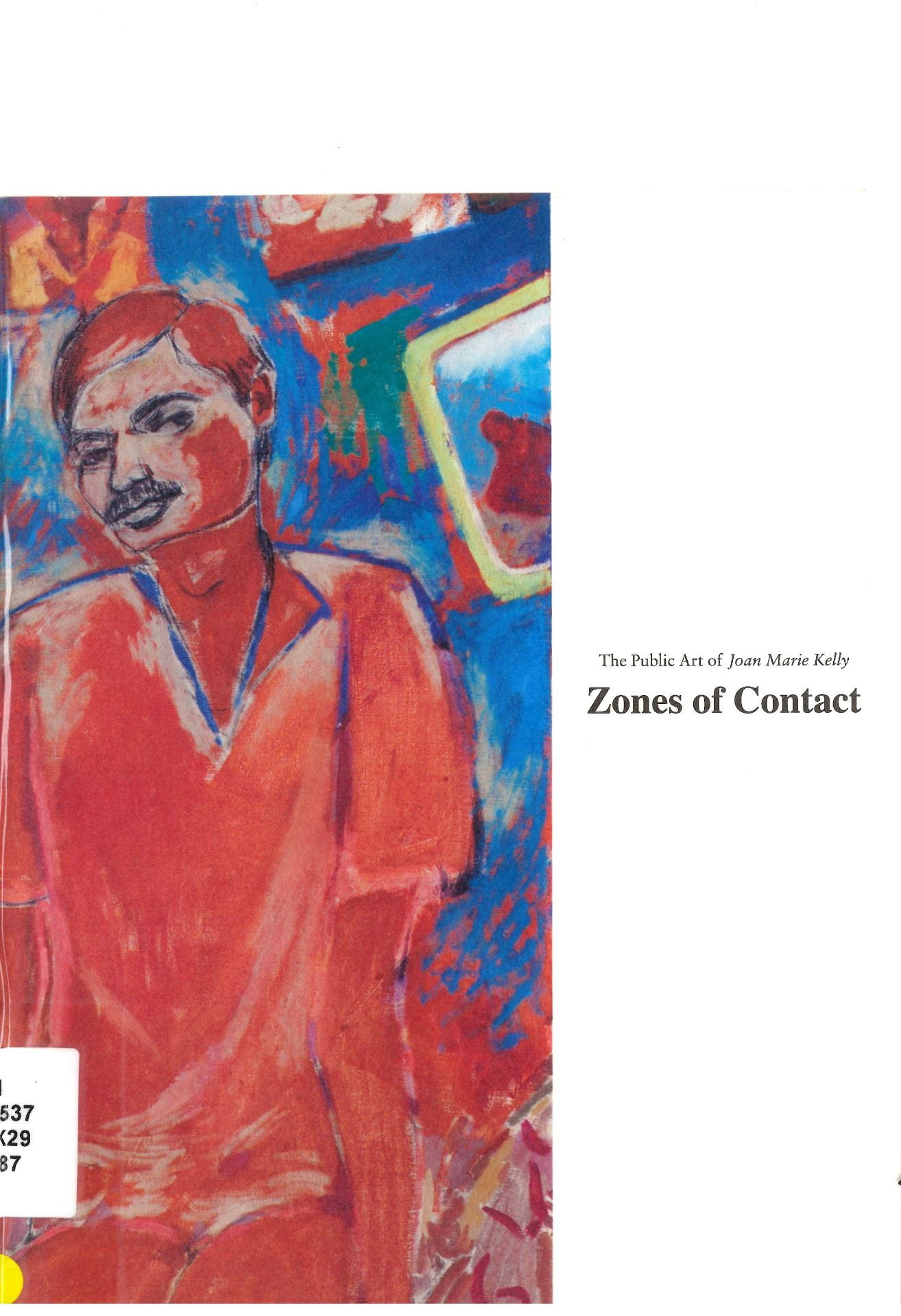
“This body of work culminates paintings created from personal encounters with marginalized communities during the last 4 years(2008 to 2011). The paintings were made in neighbourhoods of Bangladesh construction workers in Singapore, and in the brothels of female sex workers in Kolkata India. The traditions of perceptual painting and Western figure painting, are a means of communicating with communities where there is no infrastructure for such communication. Perceptual painting directly looks, studies, and maps visual forms. I am mapping forms of the body over and over again while spending time with the subject. It is an intimate relationship; such scruitiny requires trust. The relationship is centered on the artifact that traces in time the briefly joined experience that often extends to new friendships.”
2. Initial Encounters
Visual Arts Gallery, Indian Habitat Centre, New Delhi India
April 2012
“The Visual Arts Gallery at the India Habitat Centre saw a very humane approach to subjects whom most of us would not think of. Joan Marie Kelly exhibited her works titled “Initial Encounters” from the 11th to the 17th of April. These are works, which reflect a deep humane and compassionate way to look at the everyday encounters that occur in most people’s life. It is also the ability of an artist to elevate something obvious to a different level. Joan has brought the common people to the forefront with images like ‘Meeting at Puri Beach’, “Kolkata Welcome’, scenes obvious and yet appearing different from someone else’s eyes. In this case of Joan, the artist. Her sensitivity in portraying her subjects with compassion makes her one with their struggle. The poet in me responded to her paintings with these two lines: “Its so easy to fail to see the obvious and remain oblivious, and then when you do…..you do realize.” ~ Robinson, 16th of April 2012.
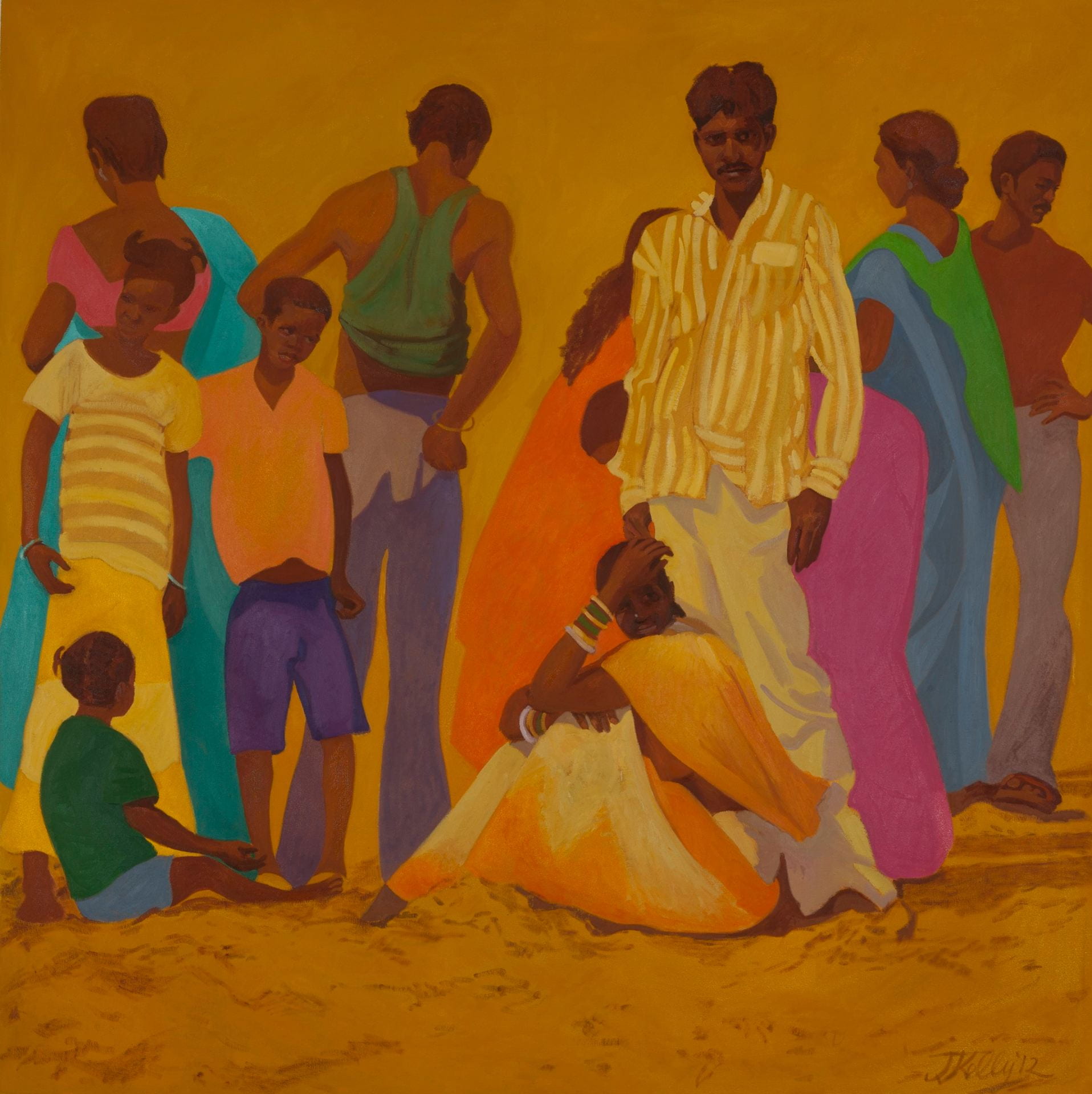 “Initial Encounters” is a selection of paintings that celebrate fresh acquaintances of the visitor to the Indian homeland.
“Initial Encounters” is a selection of paintings that celebrate fresh acquaintances of the visitor to the Indian homeland.
The exhibition demonstrates Kelly’s experiences of a precariousness that leads to the unexpected, combined with an immensely generous spirit.
This is truly an Indian show with all the Indian characters and colors. Kelly sights a uniquely Indian response to the visitor, enticing ones interest to deepen understanding and relationships.
3. The Kotha and the Akhara: historical Indian Archetypes of Masculinity and Femininity
Baron Art Gallery, Oberlin College USA
December 2014
“Her doggedness to paint perceptually where others refused to go seemed radical within the genre of contemporary representational painting. A multitude of artists In Cinema, New Media, Community-based and Grassroots artistic practices cross and blur the cultural boundaries of agency and power, but I had never seen a perceptual painter who was, in her own way, undertaking this kind of unraveling.” ~ Westconn Art News
In the Kotha and Akhara Exhibition Catalogue, Joan wrote,
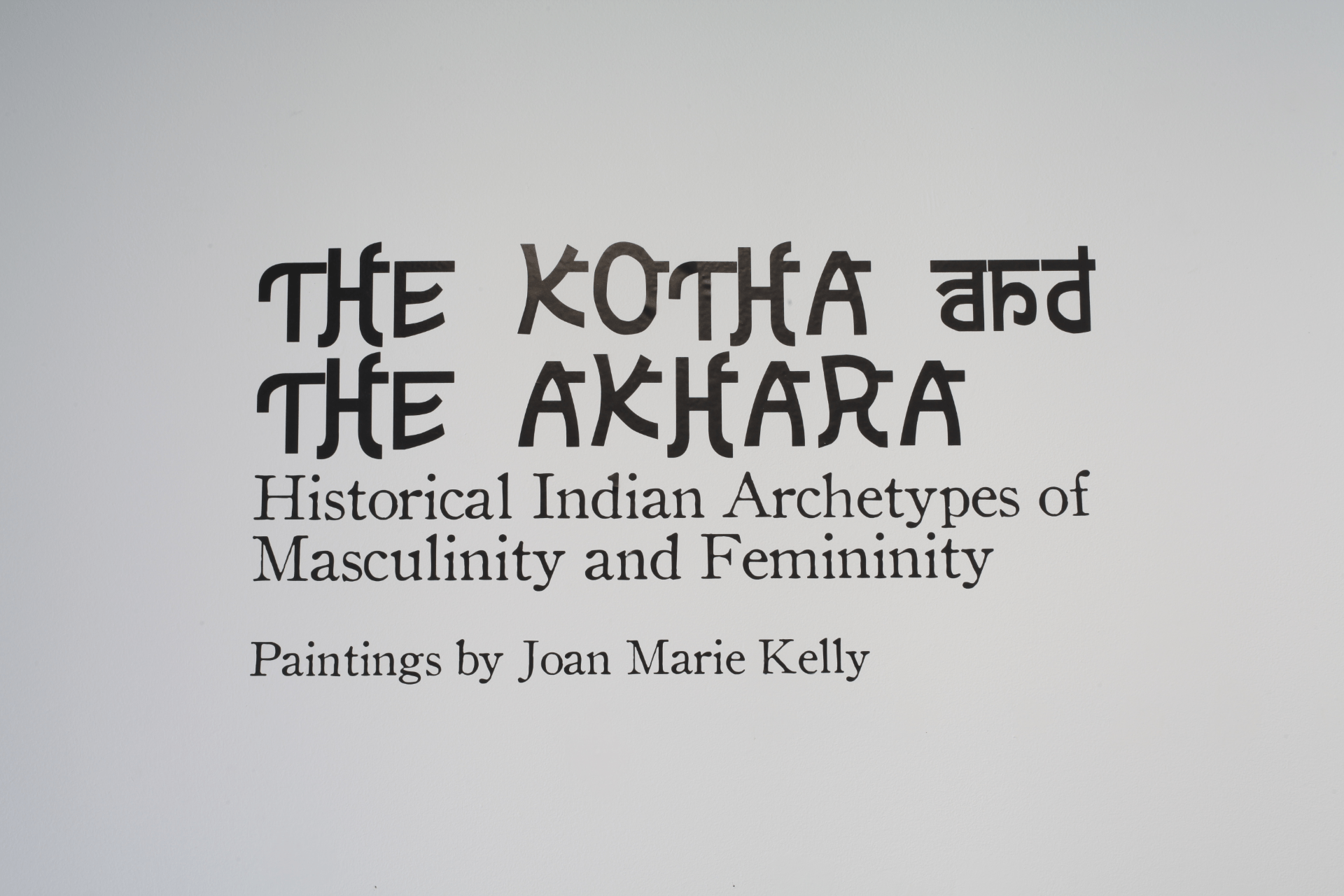 “This exhibition consists of a body of artwork inspired by spending time and making art with two contrasting communities in Indian society, sex workers and Indian wrestlers. I am viewing the sex workers on the streets of Kolkata as the cultural descendants of the “courtesan”, the archetype of femininity whose world of protocol and procesure could not adapt to transformations brought by modernity.
“This exhibition consists of a body of artwork inspired by spending time and making art with two contrasting communities in Indian society, sex workers and Indian wrestlers. I am viewing the sex workers on the streets of Kolkata as the cultural descendants of the “courtesan”, the archetype of femininity whose world of protocol and procesure could not adapt to transformations brought by modernity.
Over the centuries there have been all types of women giving sexual services from the vesya who provide sexual services to devadasi or temple dancers, to highly respected mujarewali or courtesans who were patronized by the elite of society. The Kotha (residence of the courtesans) was respected while the fine aesthetics and arts of seduction shrouded the sale of the female body. Their descendants, dis-enfranchised sex workers face a contrasting world of survival and scorn, as outcasts living on the margins of society. Presently, red light districts are pushed out, usually crime ridden and in disrepair.
I seek to thread together the historical archetype of femininity, the culture of the Kotha wih the historical archetype of masculinity, the Pahalwan and the culture of the Akhara through visual form. The Akhara is an outdoor gymnasium located in the middle of a city… The Pahalwan is the Indian wrestler that wrestles in cultivated dirt, made of clay, turmeric and ghee. Kusti is, to wrestle. Kusti, a deep-rooted Indian tradition similar to the Kotha in that both exploit the human body creating meaning through formalities of discipline and mastery of arts.”
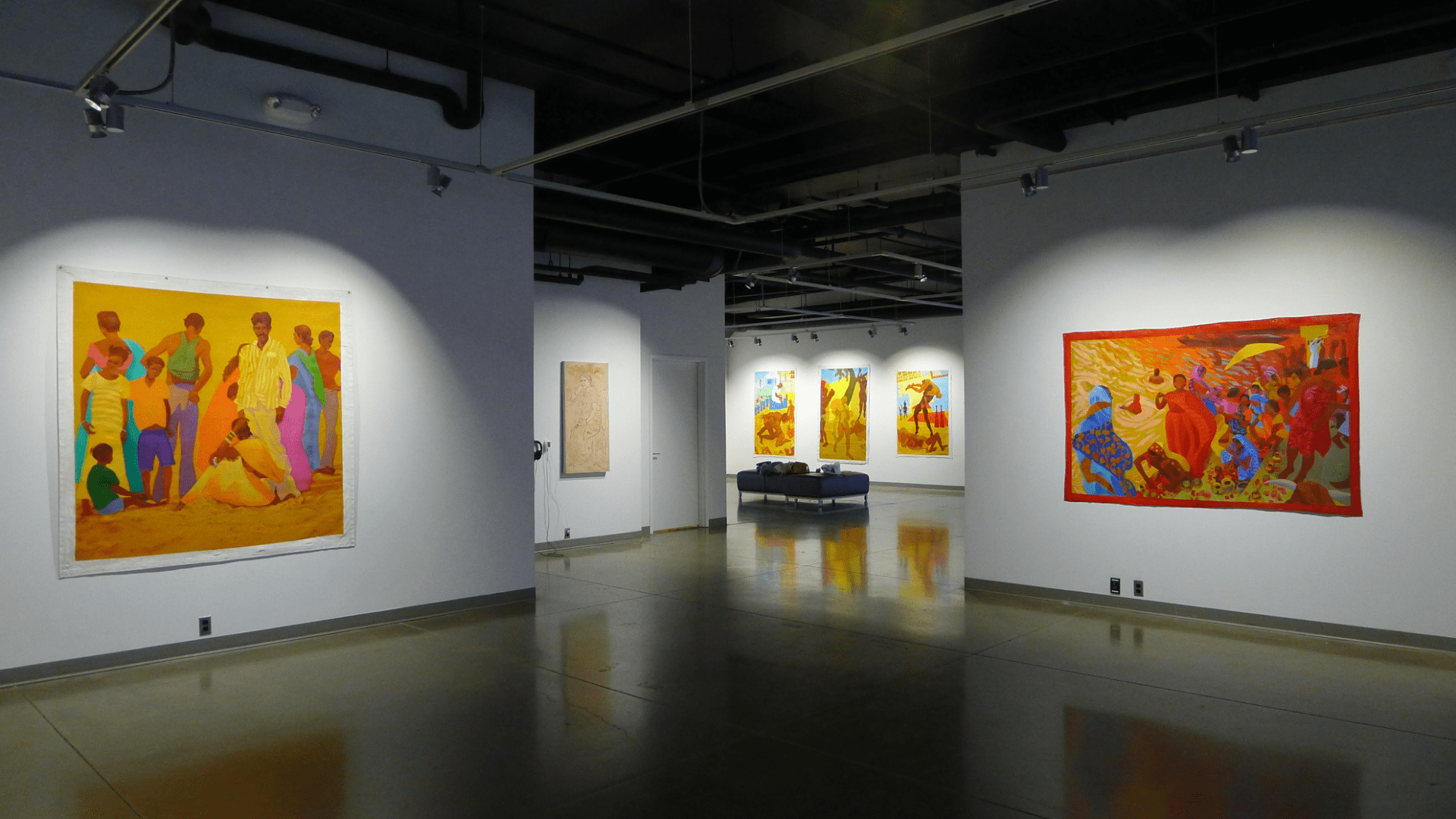
Caption: Paintings hanging in the Baron Art Gallery.
Iftry Artist Residency
7-14 June 2014, Essaouira, Morocco
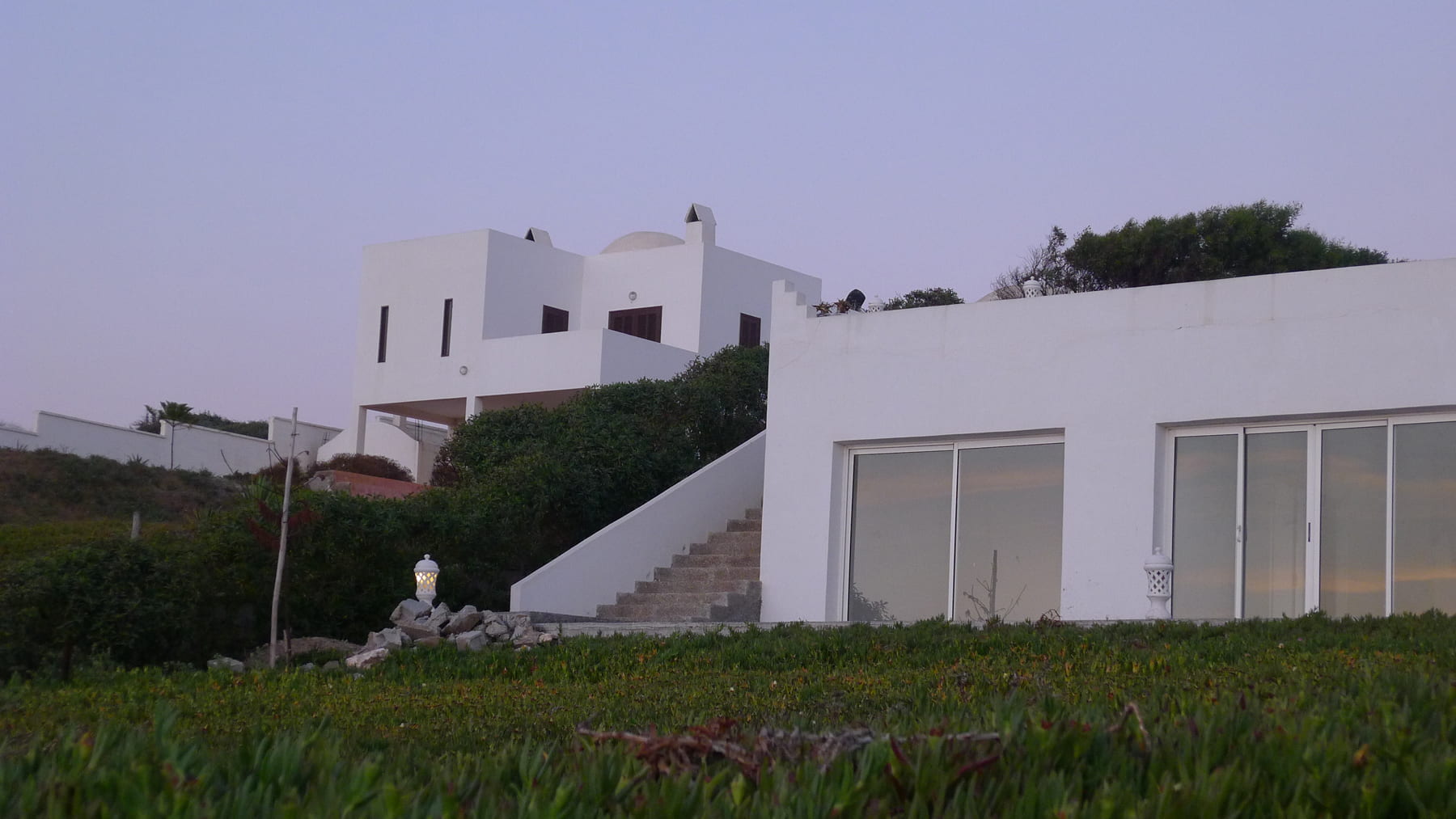
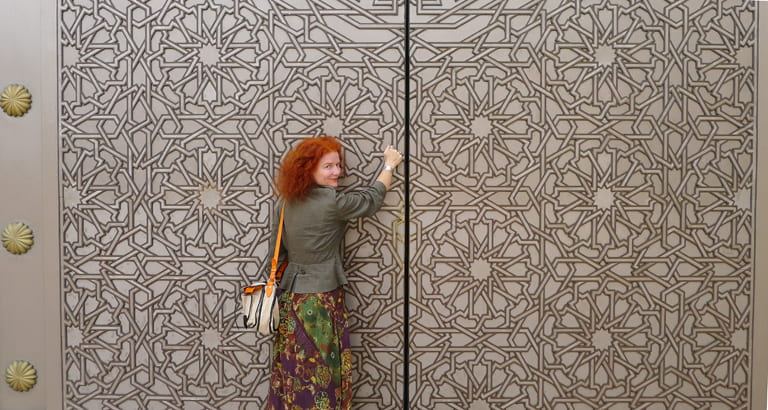
“I took a jump into the Ifitry community without knowing what to expect. The environment releases an overwhelming sense of inspiration. The isolation without any email and sense of obligations to anything else but your work enables a powerful focus.
My work is always a response to “place” or the environment that I inhabit although rarely a response to nature. Usually I am in urban locations responding to a socioeconomic situation surrounding me. My art is usually a type of activism yet from first glance one would never know this. You must know the story behind the work.
I left all of that behind me at Ifitry. The work is a response to form, color and the emotive powers of the natural environment. I began with small sketches, making notations of form and color combinations that interested me. I tried to capture a sense of the strength and emotion of a specific time of day through color in the larger pieces.
If I have to opportunity to work at Ifitry again I would use the opportunity to totally experiment. I am very attached to a sense of “making.” I would work in a totally different mediums and combine mediums. I want to place my work into the environment. I think I’ll get off the wall and into the ground.”
View her works
View her exhibition catalogues
Artist: Joan Marie Kelly

“I hope the paintings can be a testament to the real people behind the statistics; numbers and bar graphs that are the only experience most of us have with human beings that have been cast out of society yet have vibrant capabilities and imagination.”
Joan’s current artistic pursuit revolves around marginalized communities. The act of painting is an encounter with these communities which range from migrant or foreign workers such as domestic help and construction workers to prostitutes in locations ranging from Kolkata, Singapore and Shenzhen.
Joan is an assistant professor at the School of Art, Design & Media, Nanyang Technological University in Singapore since 2005.
She teaches foundation drawing, figurative drawing, information engineering and media, and thinking and communicating visually.
Courses She Taught
Foundation Drawing I
Foundation Drawing II
She received a master degree in Fine Arts from Western Connecticut State University and a bachelor degree from Maryland Institute College of Art graduating Magna Cum Laude.
Visit Joan’s website for more information.
